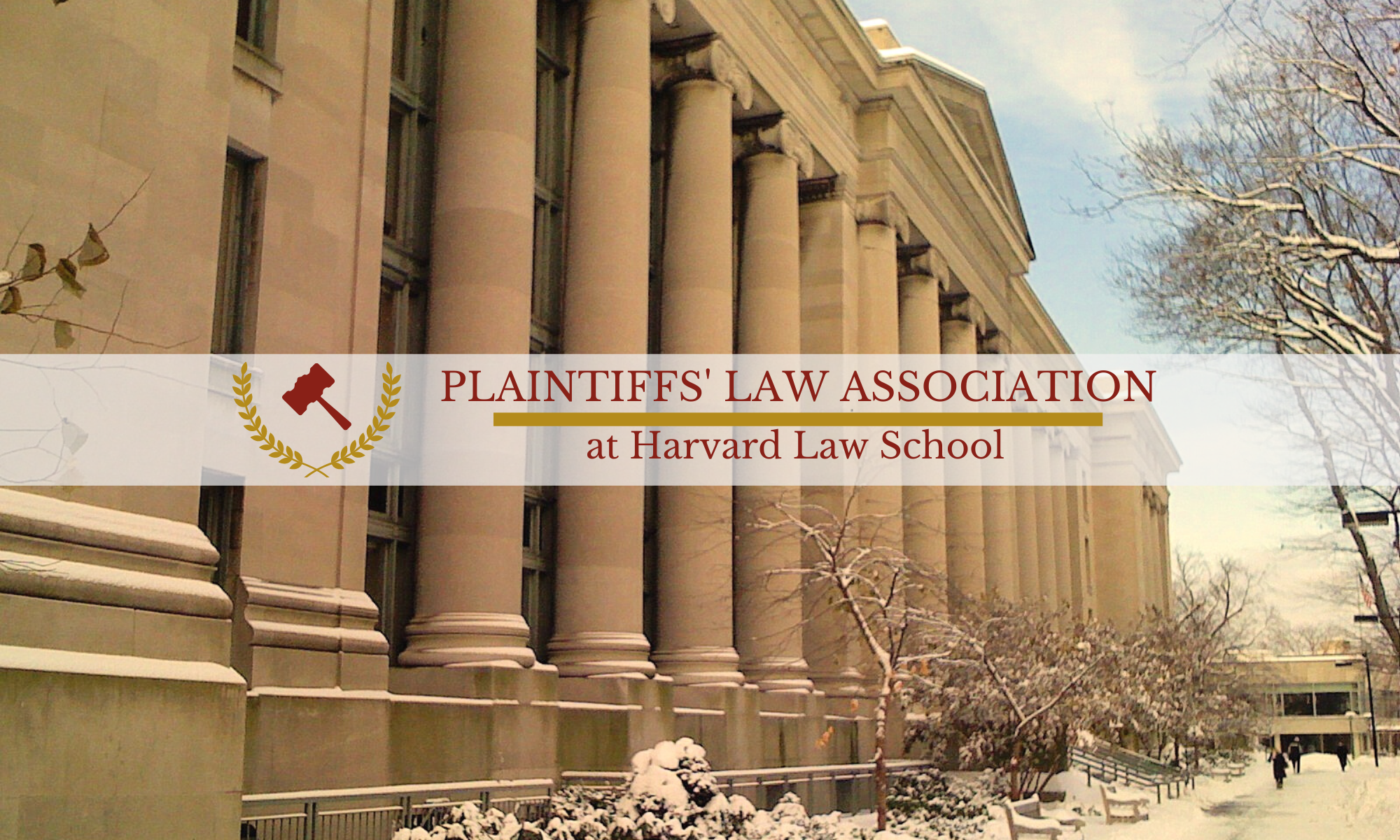By David Walsh
Deepak Gupta, a Lecturer in Law at Harvard Law School and founding principal of Gupta Wessler PLLC, is a modern-day David. His Goliath? The corporate appellate bar. HPLA and the Harvard People’s Parity Project joined Gupta for lunch last week, where we talked about equity of representation at the appellate level.
The corporate appellate bar, comprised of former Solicitors General, Supreme Court clerks, and graduates of elite law schools, is an unprecedented accumulation of legal talent.[1] Corporations facing antitrust, mass tort, and securities suits have appellate SEAL teams ready to mobilize before trial verdicts are even announced. On the plaintiffs’ side, appellate representation doesn’t match up. For those concerned with civil justice and corporate accountability, this imbalance is a serious problem.[2]
In a recent law review article, Gupta identified several obstacles to a more robust plaintiffs’ appellate bar.[3] From my perspective as a law student, two stand out. First, young appellate litigators are more likely to join high-paying defense firms as a matter of understandable household economics.[4] Second, the plaintiffs’ bar is “fractured,”[5] which I believe makes young lawyers worry about finding a stable job. It also harms future plaintiffs: while groups like the U.S. Chamber of Commerce’s Institute for Legal Reform coordinate appeal strategies to fashion corporate-friendly law, there is no real analogue on our side.[6]
So, what to do? Neither problem seems insurmountable. On the compensation front, there is more than enough money to go around. One study estimated that from 2006 to 2007, class action settlements in federal district court–just a sliver of the plaintiff-side pie–were worth about $33 billion.[7] As a matter of prudence and long-term success, trial-focused plaintiffs’ firms would benefit from using fee awards to invest in appellate litigators. Additionally, progressive appellate litigators should take solace in those whopping numbers if they’re considering hanging up their own shingles. Gerstein Harrow and Walsh Law, boutique firms that opened this year, are two examples: each boasts proven appellate litigators likely to make an impact for plaintiffs’ law precedent. As for the fractured nature of the plaintiffs’ bar, stronger networks may lead to a stronger foundation. Plaintiffs’ groups like the American Association of Justice and Public Citizen should continue to make targeted efforts at funneling law school talent toward plaintiff-side roles. Also, student organizations like ours and the Berkeley Plaintiffs’ Law Association–which are popping up across the country–can build lasting networks among and between practitioners and students.
My optimism is a product of experience: The vast majority of my classmates at Harvard are disillusioned with the idea of representing corporations after graduating. There’s a market for a plaintiff-side appellate lawyers, and building it may just be a matter of organizing the right way. Goliath was tough, but we all know how that story ended.
David Walsh JD ’23 is Treasurer of HPLA.
[1] See Richard J. Lazarus, Advocacy Matters Before and Within the Supreme Court: Transforming the Court by Transforming the Bar, 96 Geo. L.J. 1487, 1491-1502 (2008).
[2] For a moral critique of the corporate appellate bar, see Alex Pareene, Neal Katyal and the Depravity of Big Law, The New Republic (December 8, 2020), https://newrepublic.com/article/160481/neal-katyal-depravity-big-law.
[3] Deepak Gupta, Leveling the Playing Field on Appeal: The Case for A Plaintiff-Side Appellate Bar, 54 Duq. L. Rev. 383, 402-09 (2016).
[4] Id. at 407.
[5] Id. at 405.
[6] Id. at 410-11.
[7] Id. at 412-13 (citing Brian T. Fitzpatrick, An Empirical Study of Class Action Settlements and Their Fee Awards, 7 J. EMPIRICAL LEGAL STUD. 811, 811 (2010)).
